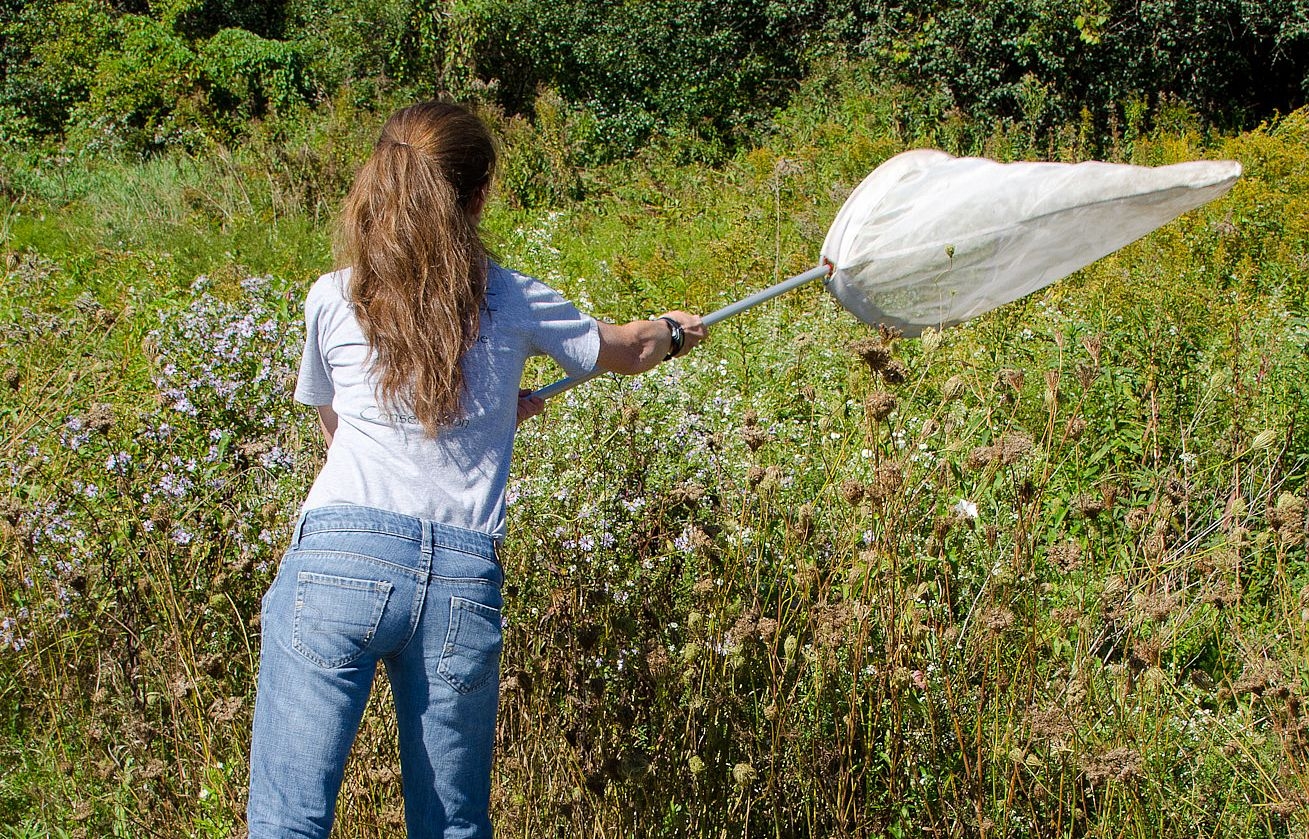
As harvest season winds down, it’s easy to forget who’s responsible for all those juicy tomatoes.
Bumblebees. Genus Bombus.
But some of these species are in decline. So the Vermont Center for Ecostudies in White River Junction has been doing a survey in the Upper Valley to learn more about Vermont’s bombus population.
On a warm sunny day in the fields behind the Farmers’ Market on Route 5, Sara Zahendra and Spencer Hardy, both biological technicians at the Center for Ecostudies, are prowling around with a big net and a jar of soapy water.
An excited Zahendra hits paydirt almost as soon as she raises her net.
"That is a bombus impatiens queen and she’s obviously much, much bigger than the workers," she tells Hardy.
"That’s the first one we’ve found this fall," Hardy agrees. "So the queens, they come out in the spring, they have their colonies, they stay underground, you don’t see them much in the summer. But then in the fall, new queens emerge to mate and then they hibernate in the winter."
Sacrificed for science, this queen ends her life in the jar along with a few workers. When they get back to the office nearby, the researchers wash their tiny catch in the sink.
They lay each sodden specimen on a table under a little tea strainer.
Each one gets blow dried. The freshly fluffed bee can be more accurately identified under a microscope. With help from citizen scientists throughout the Upper Valley, the researchers are keeping notes about where these bees were spotted, what time of day, and what plants they were visiting. The data will help determine how Vermont’s pollinator population is changing. For example, the carpenter bee, more common in southern climates, surprised Hardy.
"We’ve got ten species, ten specimens, fifteen, and I believe before this project there were only two or three of these that had ever been caught in Vermont. So it shows that there’s been some northward movement of species like this," he says.
Is it linked to climate change? That’s beyond the scope of this study. But Zahendra says the data may show changing demographics in the bee kingdom.
"And we want to keep pollinators diverse, we want to keep them in Vermont because they’re very important in pollinating our plants, particularly tomatoes. So it’s very important to know what we have here," she explains.
Because of a nationwide bee shortage, some large-scale beekeepers transport large hives to farmers who need them. That may be a short term solution to the problem but it can also threaten wild colonies that are not resistant to viruses spreading through the commercial colonies. In the long term, the Center for Ecostudies hopes to expand its survey statewide, and to raise awareness of the valuable resource buzzing around Vermont.